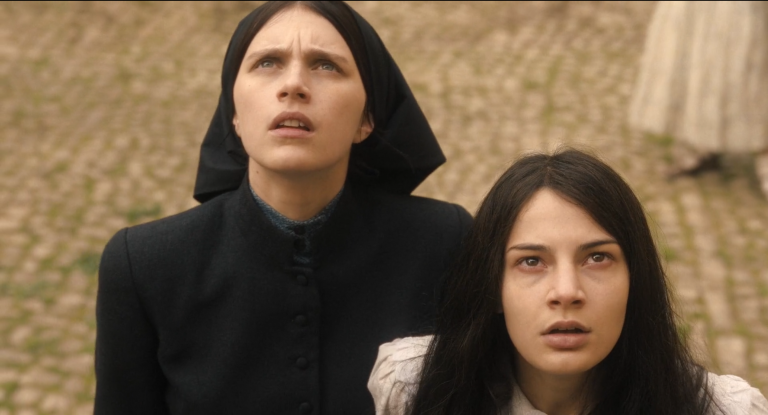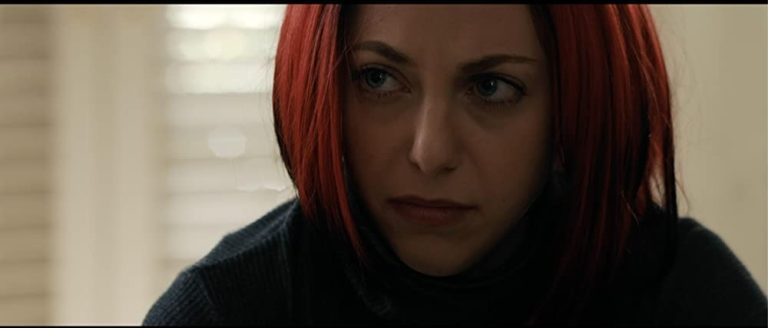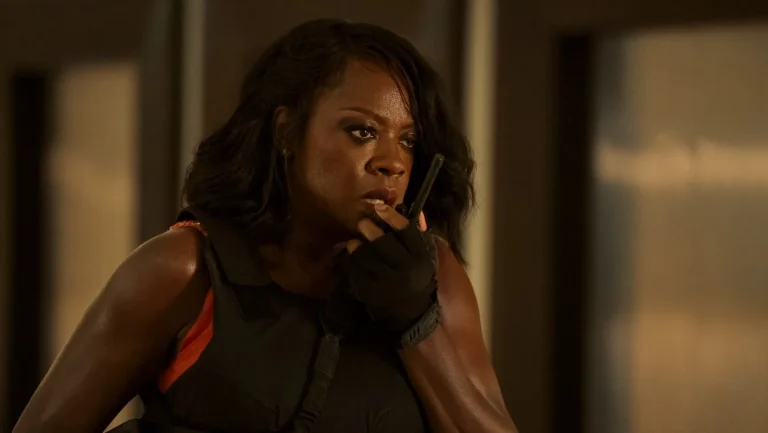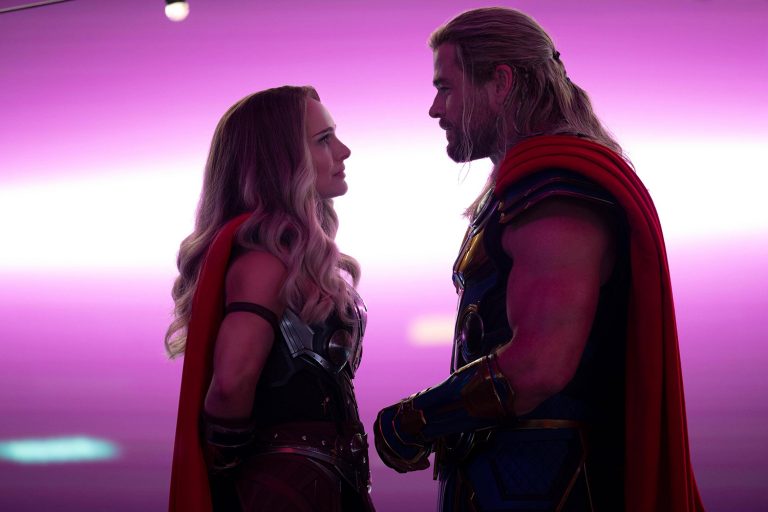When a group of individuals are enclosed within a space and compelled to combat each other until only one remains standing, it is referred to as a battle royale. In 1999, Koushun Takami’s novel Battle Royale inspired a film by the same name in the subsequent year that catapulted the concept into popular culture with a somewhat altered meaning wherein a battle royale referred to mortal combat between individuals until only one of them remained alive.
Kinji Fukasaku of The Yakuza Papers fame has directed the 2000 film Battle Royale. It opened to a massive wave of political controversy on its domestic soil, preventing its international release except for a few film festivals. But Battle Royale’s eventual acquisition and release in the west after a decade caused a surge in the film’s popularity, and it went on to gain a global cult following. Quentin Tarantino branded Battle Royale as the best film to have been released since he started making cinema in 1992.
Battle Royale (2000) Plot Summary and Movie Synopsis:
In the near future, Japan is run by a totalitarian government following a major recession during which the unemployment rate surged to 15%. The crime rate among juveniles is increasing, and to curb this, the government has passed the BR Act. According to the act, a random group of delinquent students is sent to a remote island to participate in a battle royale game from where only one challenger gets out alive as a winner.
The film revolves around Shuya Nanahara, a Year 9 student whose father committed suicide on his first day of Year 7, and Kitano, a middle school teacher who resigns after getting injured in a knife attack by Yoshitoki Kuninobu, Shuya’s best friend. Noriko, a classmate of Shuya and Nobu, had picked up the butterfly knife Nobu used to wound Kitano, and she now keeps it secretly.
One day after a year since Kitano’s resignation, Shuya’s class goes on a field trip, but soon enough, they are gassed and rendered unconscious. Upon recovery, they find themselves in a room with a large number of Japanese Self-Defense Force soldiers. Kitano arrives at the location to reveal that they have been randomly selected as participants of the year’s Battle Royale challenge, and only one who survives will leave the island. They have no choice but to comply as they are bound by a collar that tracks their location, hears their speech, and explodes upon attempted removal. Nobu gets killed by Kitano for his frantic reaction to revelations and his admittance of non-compliance.
Classmates are pitched against each other with only two choices: kill or get killed. Two transfer students, Kawada and Kiriyama are also brought into the game. From here begins a killing frenzy with friends turning on each other for survival. Kiriyama is soon revealed to be a cold-blooded killer hunting everyone. On the other hand, Kawada is a survivalist with a mysterious past and a surprisingly benevolent approach in the present, given all circumstances. Shuya knows he is no killer, and his only motive is to keep Noriko safe, as Nobu had loved Noriko.
After a series of violent set pieces during which students of Year 9 kill each other, Shuya and Noriko survive under Kawada’s protection. Kawada reminds them of his advice of not trusting anyone on the island and seemingly kills both of them to emerge as the victor. Listening to the collar mics and watching Shuya and Noriko’s mics go off, Kitano gets frustrated and sends away the JSDF soldiers while he waits for Kawada.
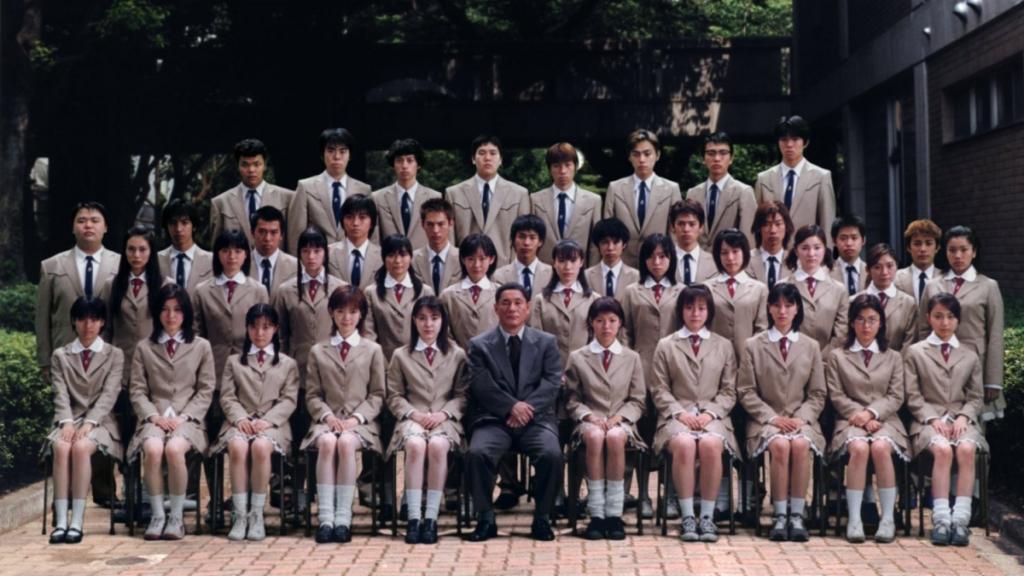
Kawada comes along with Shuya and Noriko, making it apparent that he tricked Kitano into believing in their deaths. Kawada had hacked into the systems beforehand, and he had disabled Shuya and Noriko’s collars. Kitano unveils a painting that depicts Noriko as the winner with every other classmate dead, following which he expresses how Noriko had been the only student from the class to treat him nicely, while his own daughter loathes and disrespects him. He asks Noriko to kill him but is shot by Shuya after he threatens them with a gun that is later found to be a water gun.
The three survivors leave the island on a boat on which Kawada succumbs to his injuries. Shuya and Noriko reach the mainland but are declared fugitives and charged with murders by the Japanese government. In the last sequence of the narrative, Noriko is seen giving Nobu’s butterfly knife to Shuya, and they both run towards Shibuya Station in disguise.
Who is Shogo Kawada?
Shogo Kawada, played by actor-turned-politician Taro Yamamoto, is one of the two transfer students who have been brought in to participate in the battle royale challenge along with Year 9 students of Shuya’s batch. Shogo is in survival mode, killing only in self-defense or those who are killing others. His motive is to escape the island, and he claims to know a way. Shogo has knowledge of medicine, can cook, and row a boat, and it is later revealed that he can hack into computer systems. However, he is an unreliable narrator when it comes to explaining his set of skills.
Moreover, Shogo tells Shuya and Noriko that he had participated in a battle royale challenge three years ago and emerged victorious. He loved a girl called Keiko, and they stuck together during the challenge, only to be shot at by their best friend in a desperate stint at survival. The confrontation caused the death of Kawada’s unnamed best friend and Keiko, who died in his arms with a smile. Kawada’s current and only pursuit is to find the meaning behind Keiko’s dying smile. He has been brought for a second time to increase the stakes. But in many ways, it is Kawada’s will to avenge Keiko’s death by destroying the system that caused it.
Battle Royale (2000) Movie Ending Explained:
In the conventional end, Shuya and Noriko survive due to Kawada’s protection. Kawada found himself motivated to protect Shuya and Noriko, for he saw in them himself and Keiko, driven by nothing but a selfless focus on the survival of the other. Shuya abided by the unspoken promise he made to his deceased friend of protecting the one person he loved. On the other hand, Noriko never let go of kindness, even when it meant for Kitano, who was at the perpetrator’s end of the savagery. Shuya’s selflessness and Noriko’s kindness caused their survival, but since it violated the game’s rules, the Japanese government had them declared fugitives wanted for murder. Their lives are on the run from the government, and the saga continues in the film’s sequel Battle Royale II: Requiem.
The epilogues serve a thematic purpose. They provide historicity to the characters and their motivations. Inadvertently, they also champion kindness as a virtue necessitated during trying times. Only kindness can protect us when survival is at stake and there’s complete chaos and desperation all over. It is not merely a resource in the present but a bounty for the future, as it can shield you from apathy and hostility. Building a kinder world is the only way to ensure survival and sustainability for all.
The Epilogues: Requiem I, II and III
The first epilogue probes into Mitsuko’s past, Shuya’s classmate who went on a killing spree on the island. A young Mitsuko is seen returning home to find a strange man in the house with her mother passed out. The man attempts to rape the child, but Mitsuko pushes him, making him fall down the stairs, which causes his death. In a more recent past, during a basketball game, while everyone is seen enjoying and cheering, Mitsuko is seen as socially anxious and reclusive, unable to amalgamate with the rest of the crowd.
The second epilogue consists of Shuya sitting on the empty basketball court. A ball is dropped, and Nobu visits him to reassure him that everything will be fine.
In the third epilogue, Noriko and Kitano are seen by a riverbank eating an ice candy. It is happening post Kitano’s resignation from the school. Amidst a warm and cheerful moment between a teacher and the only student who was kind to him, Noriko tells Kitano that she has kept the knife with her that Nobu attacked Kitano with. Kitano has an indeterminable expression on his face with which he responds:
“In this moment, what should an adult say to a kid?”
Kitano’s Role in the Narrative
Kitano, played by Takeshi Kitano, is a middle school teacher bullied by his class. Hinted at being monotonous in his teaching methods and a reclusive individual lacking social skills, Kitano is wounded on his thigh one day by Kuninobu. Kitano resigns from the school, and two years later, he is seen in charge of Shuya’s class participation in Battle Royale. Filled with rage and apathy, he kills two students for their lack of discipline even before the game begins. Kitano has a dysfunctional relationship with his daughter. As inferred from the brief conversations he has with a woman on call, he is loathed by his daughter.
Kitano is essentially a representative of the hostile adult whose extremity is an outcome of the cruelty and disrespect given to him by the youth. He stands on one end of the generation while the children are on the other, with nothing but a hollow gap between the terminals. And the gap between the two generations has been hollowed out due to moral conservatism under which unquestioned obediency is sought from the young. At the same time, the old remains unavailable as they perform their social roles as protectors and caregivers. Effective communication is absent.
When Kitano says, “In this moment, what should an adult say to a kid?” to Noriko’s revelation of possessing the knife he was stabbed with, he reveals a critical dilemma. Noriko’s revelation itself is one of those rare moments of affection he has received in his life. And yet, the nature of the same is lethal, and it cannot be encouraged with a positive reaction.



